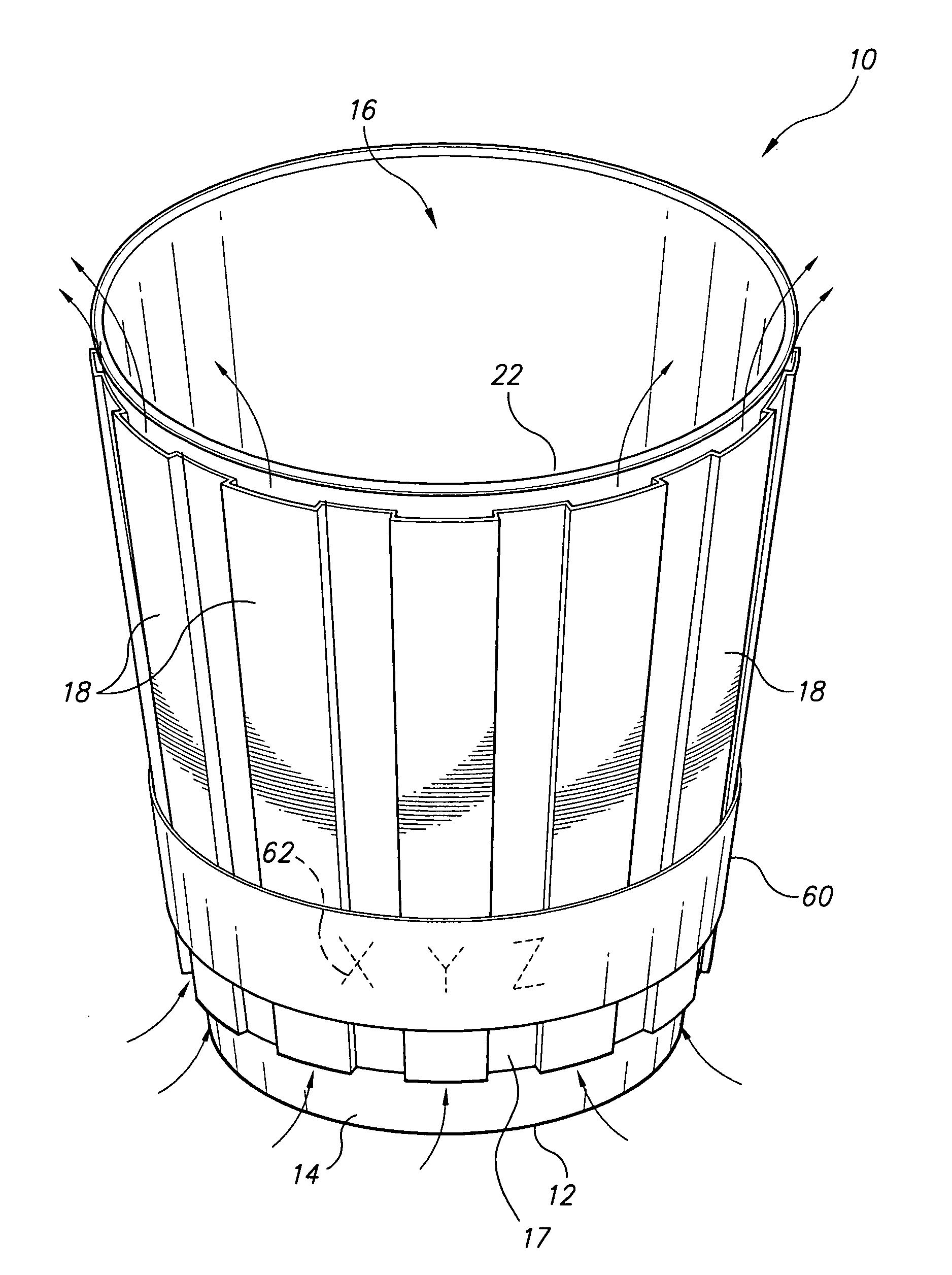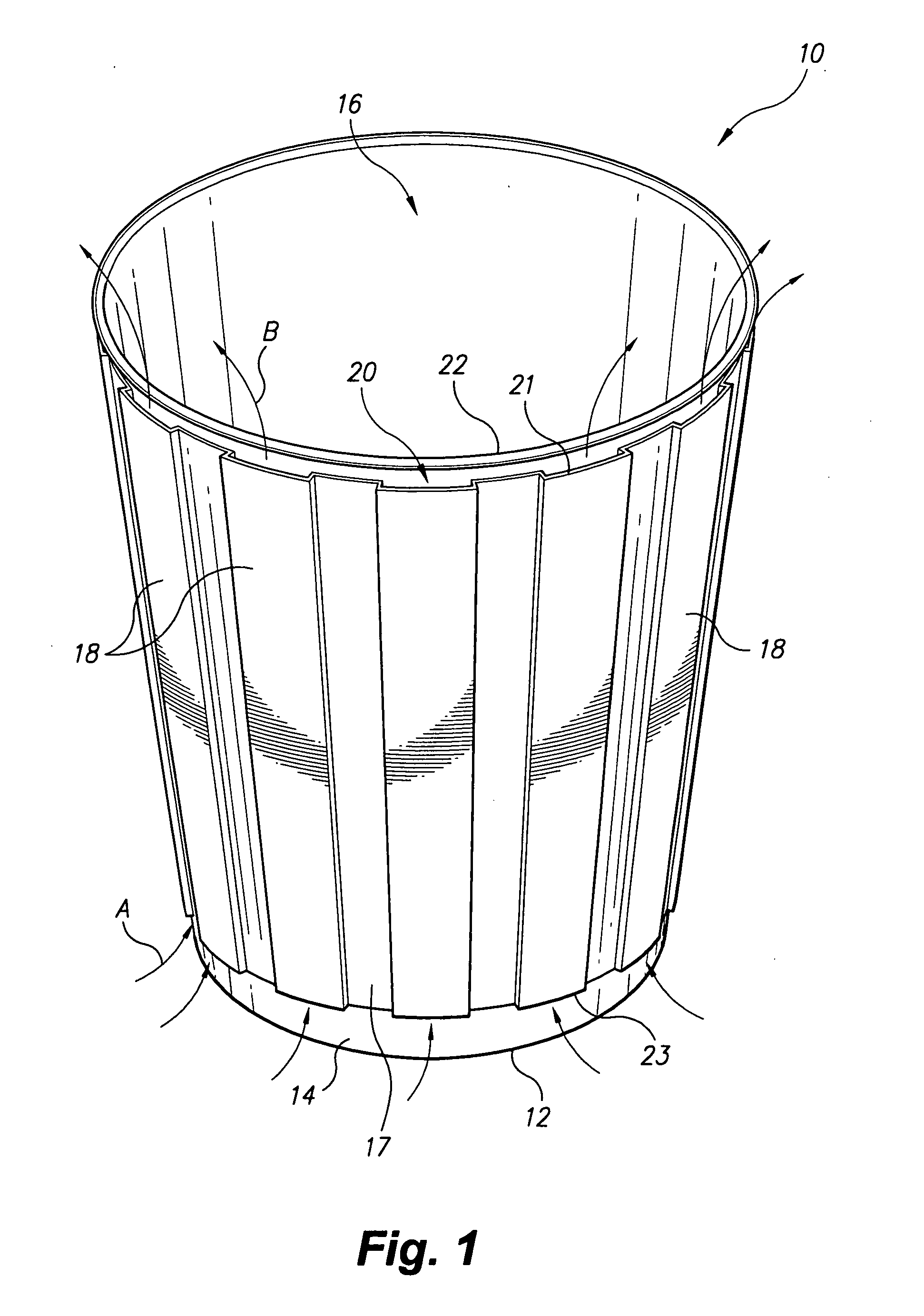Insulated beverage container
- Summary
- Abstract
- Description
- Claims
- Application Information
AI Technical Summary
Benefits of technology
Problems solved by technology
Method used
Image
Examples
Embodiment Construction
[0025]FIG. 1 shows a first embodiment of an insulated beverage container 10, such as a coffee cup, that provides thermal insulation for the user's hand. As shown in FIG. 1, the insulated beverage container 10 includes an annular wall 14 having an upper end and a lower end, with the annular wall 14 being elongated along a vertical direction. The upper end may have an annular lip or rim 22 formed thereon that allows for releasable attachment of a lid, as is conventionally known.
[0026]A base 12 is secured to the lower end of the annular wall 14 so that an upper surface of the base 12 and the annular wall 14 define an open interior region 16 therein adapted for receiving and containing fluids. The annular wall 14 and base 12 may be formed in any conventional manner to form a beverage receiving cup, as is conventionally known. It should be understood that the container 10 illustrated in FIG. 1 is shown for exemplary purposes only, and that the outer layer, to be described in greater deta...
PUM
 Login to View More
Login to View More Abstract
Description
Claims
Application Information
 Login to View More
Login to View More - R&D
- Intellectual Property
- Life Sciences
- Materials
- Tech Scout
- Unparalleled Data Quality
- Higher Quality Content
- 60% Fewer Hallucinations
Browse by: Latest US Patents, China's latest patents, Technical Efficacy Thesaurus, Application Domain, Technology Topic, Popular Technical Reports.
© 2025 PatSnap. All rights reserved.Legal|Privacy policy|Modern Slavery Act Transparency Statement|Sitemap|About US| Contact US: help@patsnap.com



